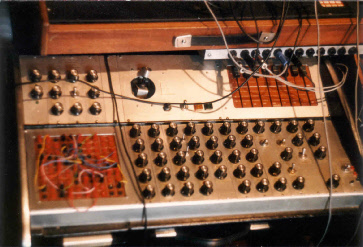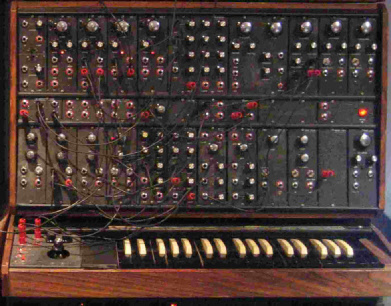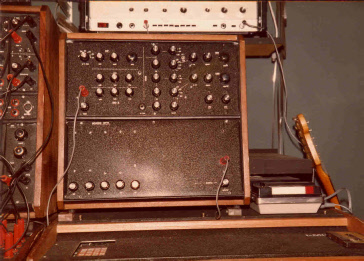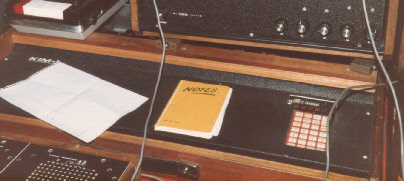
Synthesiser Adventures...
In the early seventies there was a revolution going on in music making. An all electronic instrument, the sound synthesiser, was making a new sound world available to musicians. When I heard what these instruments could do, I was hooked. I wanted one! The trouble was that they were expensive; far too expensive for me. But, I was determined and I did have some electronic knowledge and building skills accumulated since childhood... so the only answer was to try to build one.
The first one was based on a design (around 1972-
Then, hmmm..., my eyes started to glaze over as I started to think bigger!
This was the result. Completed in the following year, it was a large modular synthesiser that looked a bit like the big Moog series C synthesisers that were available at the time. None of the circuits are like Moog’s though. It has over 20 separate waveform generating and processing modules, plus the keyboard, all of which can be plugged together with patch cords. The patching permutations are huge and so is the range of synthetic electronic sounds that can be produced. It can also be used to process any recorded sound fed into it. For tuning stability it’s wholly a Hz/volt based system.
The keyboard came from that first synthesiser and was re-
The synthesiser has served me well as my main workhorse for over 20 years and features regularly in my electronic music compositions
At the end of the seventies big computers had spawned new affordable tiny microprocessor
boards; precursors to famous early micro-
To program it and operate the processor a simple keypad and a six digit LED display
is used. My machine code software initially took up 2KB of memory burnt to an EPROM
chip. Sequencing program data was stored on the cassette recorder to the right. Sequencing
consisted of one voltage control pitch line with envelope triggers and one percussion
line of percussion triggers. Many sequences could be entered and several master play
lists could be used to sequence the sequences. Enough data could be held in the
microprocessor to do a complete set. I think I had to re-
In the beginning...
A personal odyssey [1973-
The Big Modular Synthesiser... 1975
Computer Sequencing... [ circa 1980 ]
The square case above the processor contains two panels :a small 2 oscillator dedicated
pre-
With my software I could enter and edit various separate patterns of notes and drum
beats with the keypad and have them playback from a master table in any order with
up to 255 repeats, at any tempo. The notes, interestingly, could be to any musical
or non-



